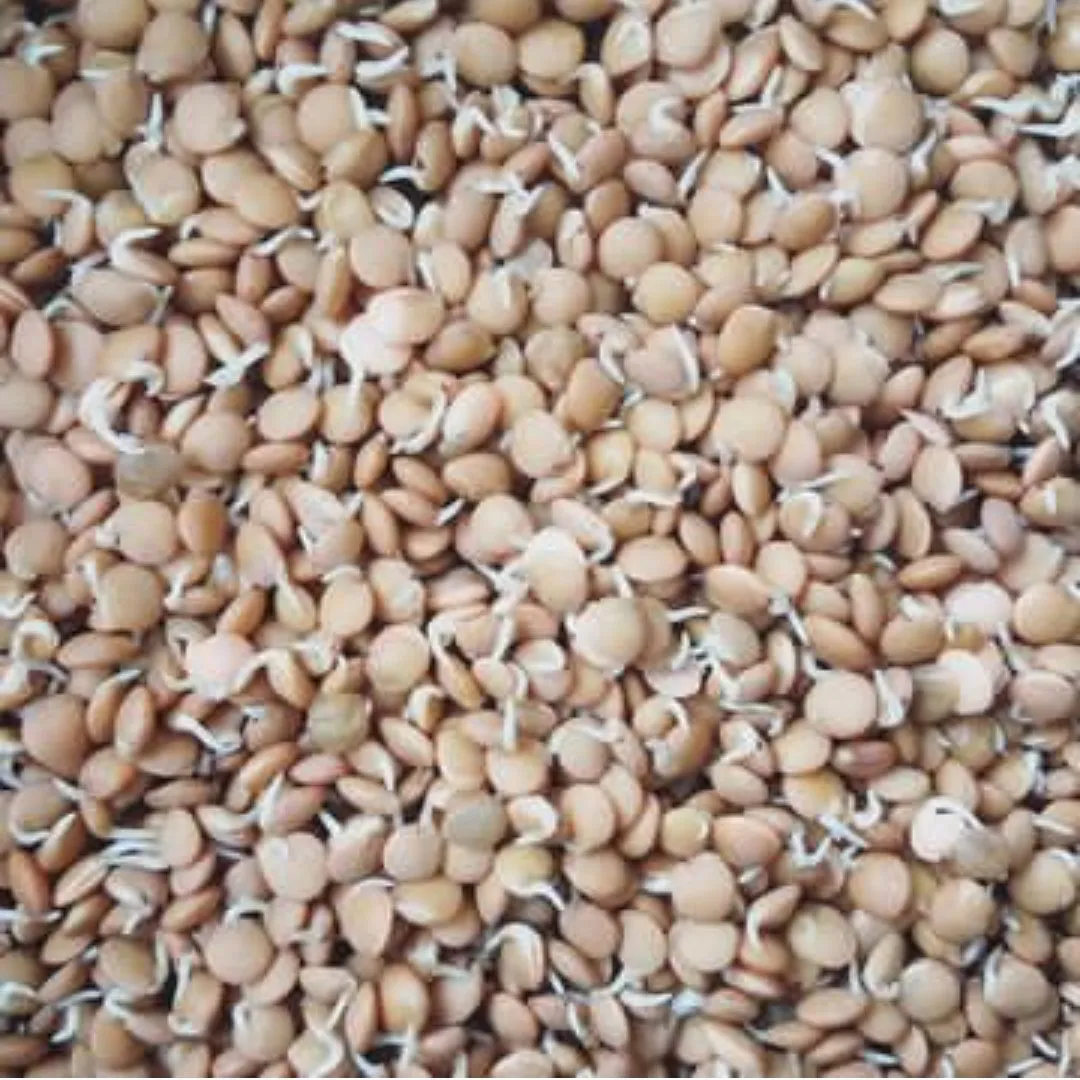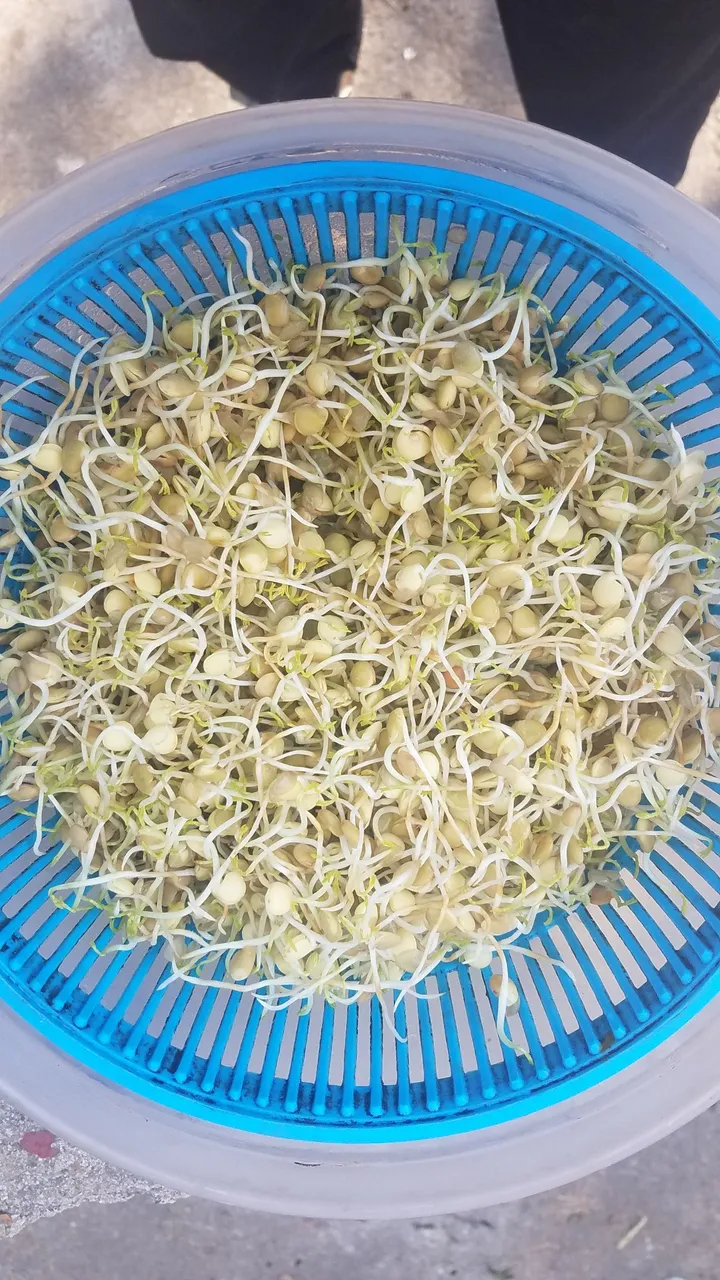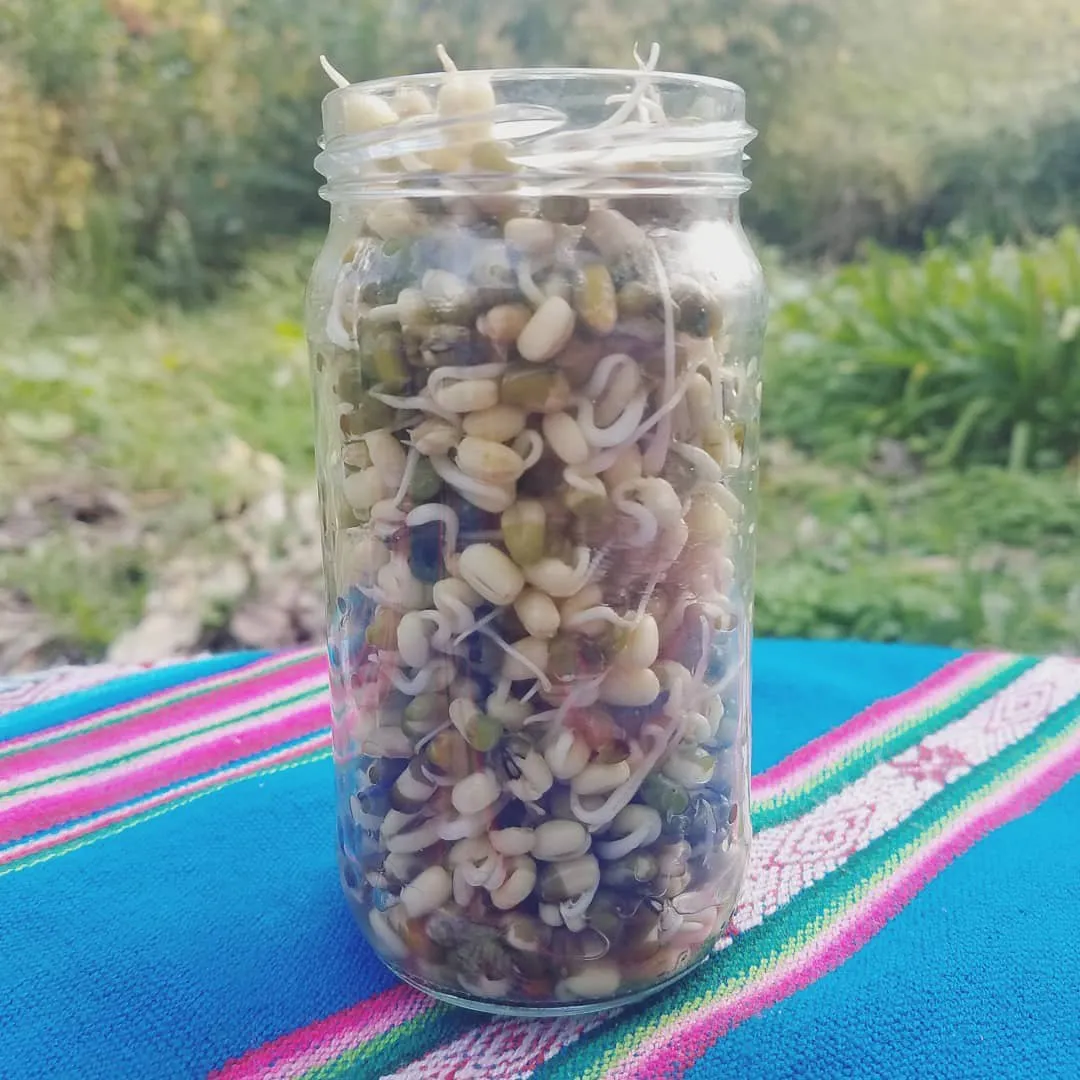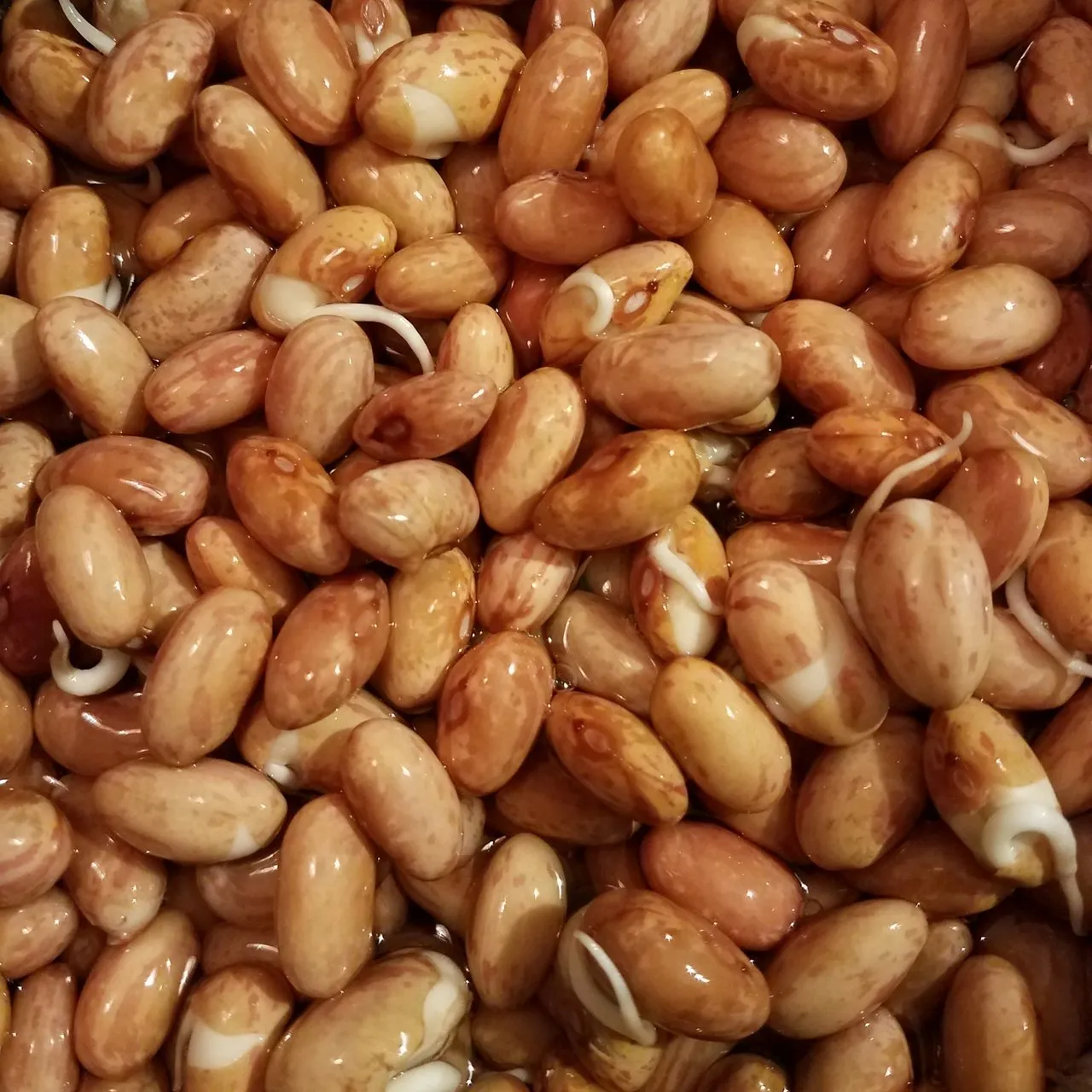
Sprouting is an easy and efficient way to make the most of store bought dry goods like seeds, grains, and even beans. The words germination and sprouting can be used interchangsbly and refer to the transformation of a seed into a young plant. Unlike a traditional garden however, you do not need sun to germinate a seed, bean, or grain, all you need is humidity and warm temperatures.
Once you have read over this blog post you can start germinating inside your kitchen using supplies you likely already own. For the most part you can follow a very similar recipe with legumes, grains & seeds. There are many edible seeds and grains that work well for this process but let’s start with the easy ones: lentils, mung beans, and black or brown beans. And the necessary equipment for sprouting are few all you need is a large bowl and a colander – that’s it! Alternatively you can use a jar with a mesh filter but I have had much more success with the bowl/colander combo- read on for the full instructions.

Germinating, the step by step recipe:
Step one: once you have your dry grains ready, simple put them in a ceramic, glass or even plastic bowl. Fill the bowl almost entirely with water, be sure to totally cover the seeds with water but do leave extra space because the seeds will expand. I recommend doing this right before bed so that the seeds have around 8 hours soaking in water.
Next step: in the morning, or about 8 hours later, drain all the water from the bowl. This is where the colander comes in handy, just dump all the continents of the bowl into the colander. The water will drain away and you are left with just the grains which should be significantly larger than 8 hours previously. If you can spare the colander for a few days, go ahead and leave the grains in the colander and place the colander over the bowl. This way any remaining water will drain out. See photo:
This is where my recipe may begin to diverge from others. I have read that after soaking for 8 hours, you should let the seeds/grains stand for 8 hours, then soak again for another 8. But honestly I don’t think this is necessary with most seeds or grains (and the extra 8 hours in water sometimes leads to decomposition or mold). After the initial soaking I just keep the grains in the colander and wash them 3 to 5 times a day. After about 2 days they will begin to sprout and grow roots.
The process really is simple but here is an important tip: when rinsing off the grains (3 to 5 times per day) be sure to move the grains around so that those at the bottom get a chance to be at the surface and vice versa – this helps avoid mold or any decomposition of grains stuck at the bottom of the pile.

And if you dont have an extra colander you can use a regular jar like in the pictures but it really doesn’t work as well. In a jar the grains just dont have enough room to grow and often get stuck or start to decompose. You can however store sprouted grains in the fridge in a jar until ready for use, which I often do.
You have sprouted the grains, now what?

After a few days of diligently rinsing off your beans or grains it’s time to use them! Germinated grains, like these lentils, actually have more nutrients available as the grain has started its transformation into a plant. And the soaking and washing process makes the lentil (or other grain) more digestible. As the seed sprouts it sheds the anti-nutrients that help protect the seed. These anti-nutrients can be hard to digest for many people, this is part of why so many folks have gas when they consume beans. Next time try soaking and sprouting them first!
There are many different ways to use sprouted beans and legumes and I will be posting other recipes here in the future. For now though, let’s keep it simple, cook your sprouted grains in soups, stews, or by themselves with garlic and some salt. Although it is important to cook the legumes you will find that they cook much faster when soaked and germinated.
Happy Germinating!!
